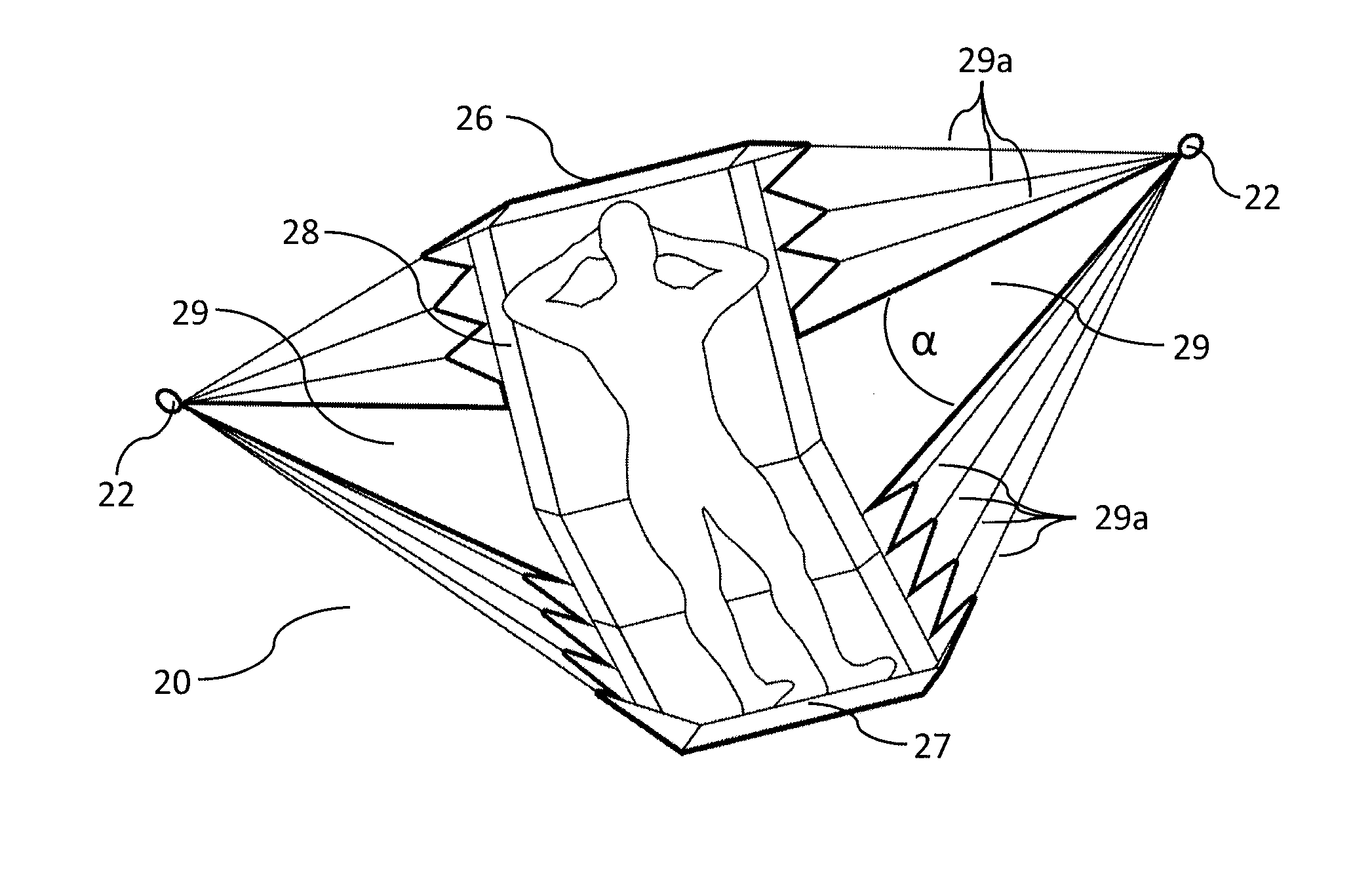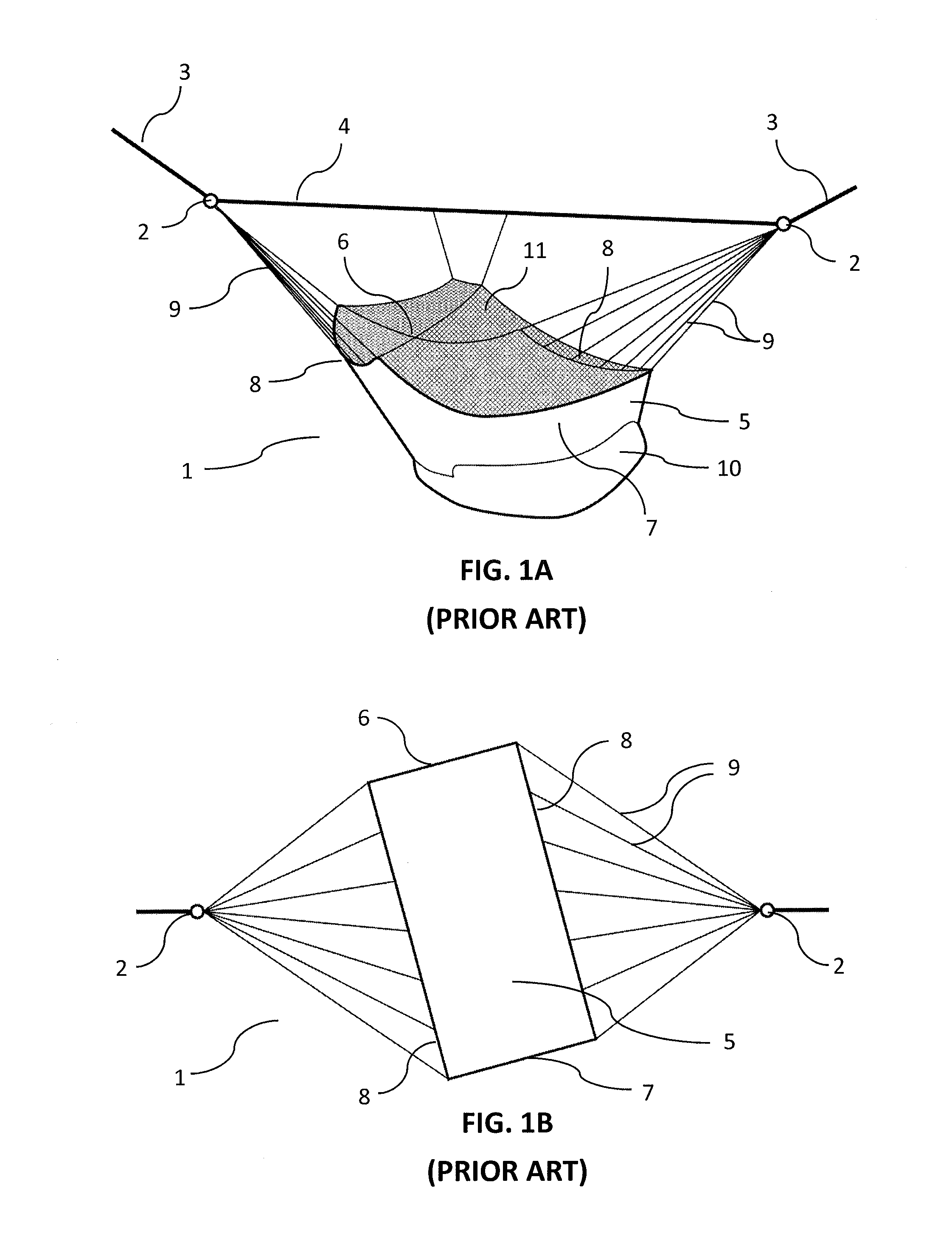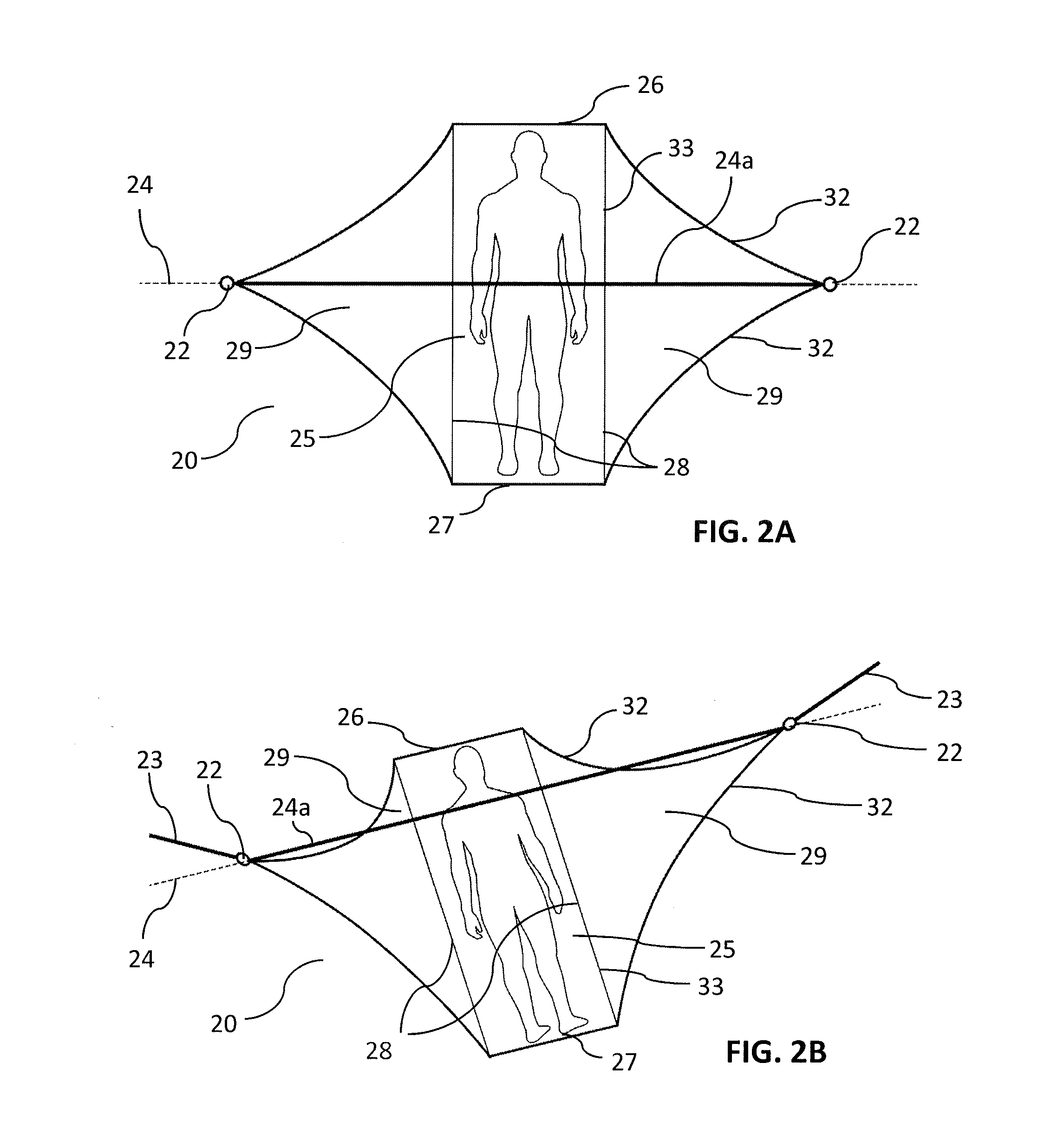Hammock
a hammock and sock technology, applied in the field of hammocks, can solve the problems of prone to becoming tangled with each other, sag in the hammock, sleeping position, etc., and achieve the effect of difficult connection
- Summary
- Abstract
- Description
- Claims
- Application Information
AI Technical Summary
Benefits of technology
Problems solved by technology
Method used
Image
Examples
Embodiment Construction
[0070]FIG. 1A illustrates a front perspective view of a known transverse hammock 1 that is available from Exped AG. The hammock 1 has a pair of suspension points 2, which are in turn suspended from lines 3 that are anchored to immovable objects, such as two adjacent trees (not shown). The separation of the suspension points 2 is controlled by a ridge line 4 that extends between the two suspension points 2.
[0071]The hammock is a transverse hammock, i.e., the user is intended to lie on a mid-section 5 that is orientated substantially at right angles to the ridge line 4. Thus the head end 6 and the foot end 7 of the mid-section 5 are positioned either side of the ridge line 4 when viewed from above rather than in line with it.
[0072]The opposed lateral edges 8 of the mid-section 5 are suspended from an array of ropes 9 that extend from each suspension point 2, the ropes 9 being spread out along the lateral edge 8 at intervals. The length of the ropes 9 is fixed to provide a suitable sle...
PUM
 Login to View More
Login to View More Abstract
Description
Claims
Application Information
 Login to View More
Login to View More - R&D
- Intellectual Property
- Life Sciences
- Materials
- Tech Scout
- Unparalleled Data Quality
- Higher Quality Content
- 60% Fewer Hallucinations
Browse by: Latest US Patents, China's latest patents, Technical Efficacy Thesaurus, Application Domain, Technology Topic, Popular Technical Reports.
© 2025 PatSnap. All rights reserved.Legal|Privacy policy|Modern Slavery Act Transparency Statement|Sitemap|About US| Contact US: help@patsnap.com



